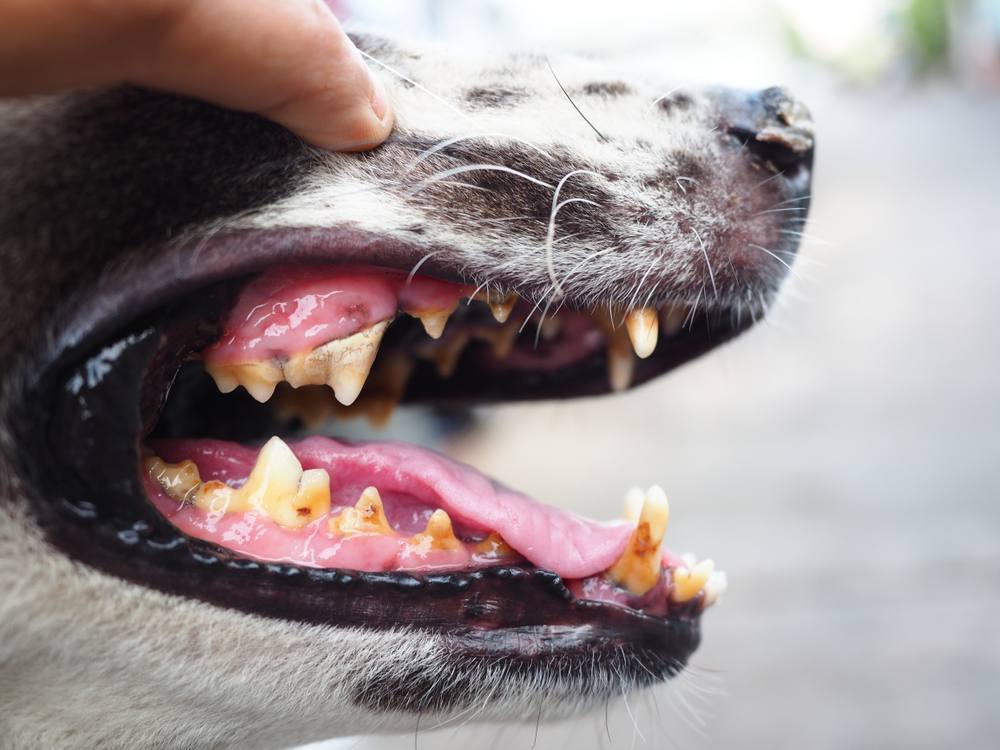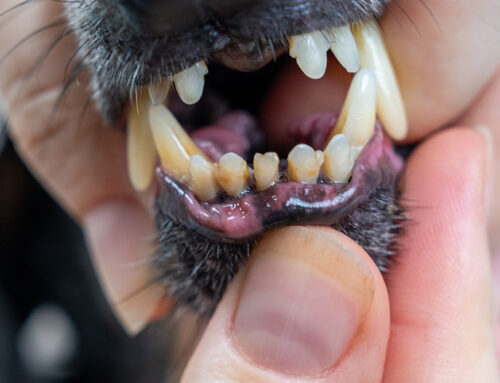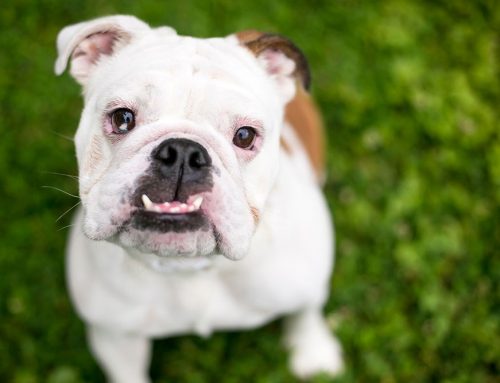Each pet has their own unique characteristics that cause plaque and tartar to accumulate, resulting in inflammation and periodontal disease to develop at different rates. While general guidelines recommend that all pets receive annual professional dental cleanings, each pet’s oral and overall health should be carefully assessed to determine their appropriate schedule.
Several important factors need to be taken into account when determining your pet’s dental cleaning schedule. Here are five considerations for deciding how often your pet needs a professional dental cleaning.
#1: Your pet’s breed and size
Breed and size are two important considerations for determining the frequency of your pet’s dental cleanings. Pets that have a malocclusion (teeth are crowded, rotated, or angled in an abnormal direction) are more prone to trapping debris in hard to brush areas. Size also matters, as all dogs start with 42 teeth and cats with 32 teeth regardless of their face shape or size. Smaller pets often have worse periodontal disease compared to a larger pet of the same age.
Breeds known for poor oral health, because of genetic factors and/or anatomical features, include:
- Dachshunds
- Yorkies
- Chihuahuas
- Poodles
- Shelties
- Collies
- Pugs
- French Bulldogs
- Boxers
- Shih tzus
- Malteses
- Greyhounds
- Himalayans
- Persians
Large- and giant-breed dogs tend to have better periodontal health than their smaller counterparts, but aggressive chewers who are offered the wrong chew toy or that like to chew on inappropriate objects (no rocks please!) can suffer from worn or fractured teeth that can lead to other oral problems.
#2: Your pet’s age
In general, oral health worsens as your pet (and you) get older. However, up to 90% of pets have some level of periodontal disease by age 2, so any pet can suffer at any age. And, a lifetime of wear and tear on the teeth, unbalanced nutrition, and bad chewing habits contribute to advanced dental problems.
It is important to remember that age is not a disease. Although older pets may have increased risk factors, most can still safely undergo anesthesia for treatment of their oral disease. Removing pain and infection sources, such as diseased teeth, can make your elderly pet feel young again, and you will be amazed at the difference in their attitude. When considering dentistry in animals, we always weigh the risks and benefits with you, so that we can determine the best course of action and how to safely treat your pet’s gum disease.
#3: Your pet’s lifestyle and habits
Some pets are more rough-and-tumble than others—as evidenced in their oral health. If your furry pal enjoys chewing on durable toys, tries to gnaw on rocks in the driveway, or picks up sticks whenever they are outdoors, their teeth and gums can suffer. Or, your pet who never chews on recommended toys or treats and seems to gulp down their kibble whole may be prone to faster tartar accumulation.
Another key influence of your pet’s lifestyle on dental cleaning frequency is toothbrushing. The gold standard of at-home dental care for pets is daily toothbrushing, because waiting more than 24 to 48 hours between brushing sessions allows plaque to form and harden into tartar, which cannot be scrubbed away. By brushing your four-legged friend’s teeth regularly, you can lengthen the time between dental cleanings.
#4: Your pet’s health history
Certain health issues can adversely affect your pet’s oral health and require more frequent dental cleanings to maintain a comfortable, healthy smile. Pets with autoimmune diseases, diabetes mellitus, Cushing’s disease, puppy, and assorted other health conditions are more prone to gingivitis and periodontitis, stomatitis, weakened tooth enamel, and oral infections. Pets with chronic health conditions require not only regular physical exams and monitoring, but also more frequent dental cleanings.
#5: Your pet’s diet

The nutrition that your pet’s diet provides helps support strong, healthy periodontal tissues, and the food itself can affect oral health. While dry kibble was thought to scrape away plaque and tartar, studies indicate that most standard dry diets provide minimal abrasive action. However, prescription dental diets have large kibble pieces designed with a unique matrix that allows teeth to penetrate, rather than shatter, the kibble. The tooth gouges the kibble and sinks in up to the gumline, which achieves an effective scrubbing action.
While prescription dental diets are best for oral health, your pet may have other concerns that require a different food for them to be happy and healthy. Speak to your primary care veterinarian about the best diet for your pet before making any adjustments. Contact your primary care veterinarian for their advice for your pet’s individual dental cleaning schedule, because they are most familiar with your furry pal’s health and medical history. For more specialized periodontal procedures, schedule an appointment with our North Bay Veterinary Dentistry team, and we can also help you figure out the best way to prevent periodontal disease in the future.






Leave A Comment